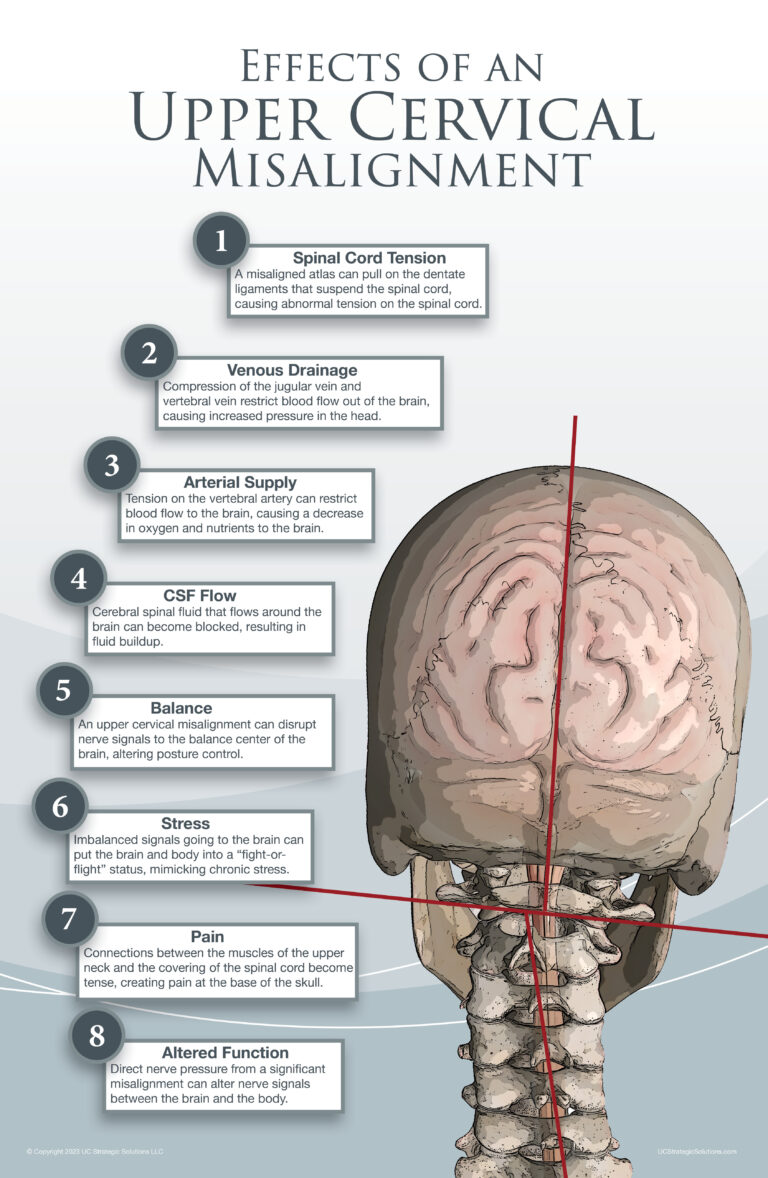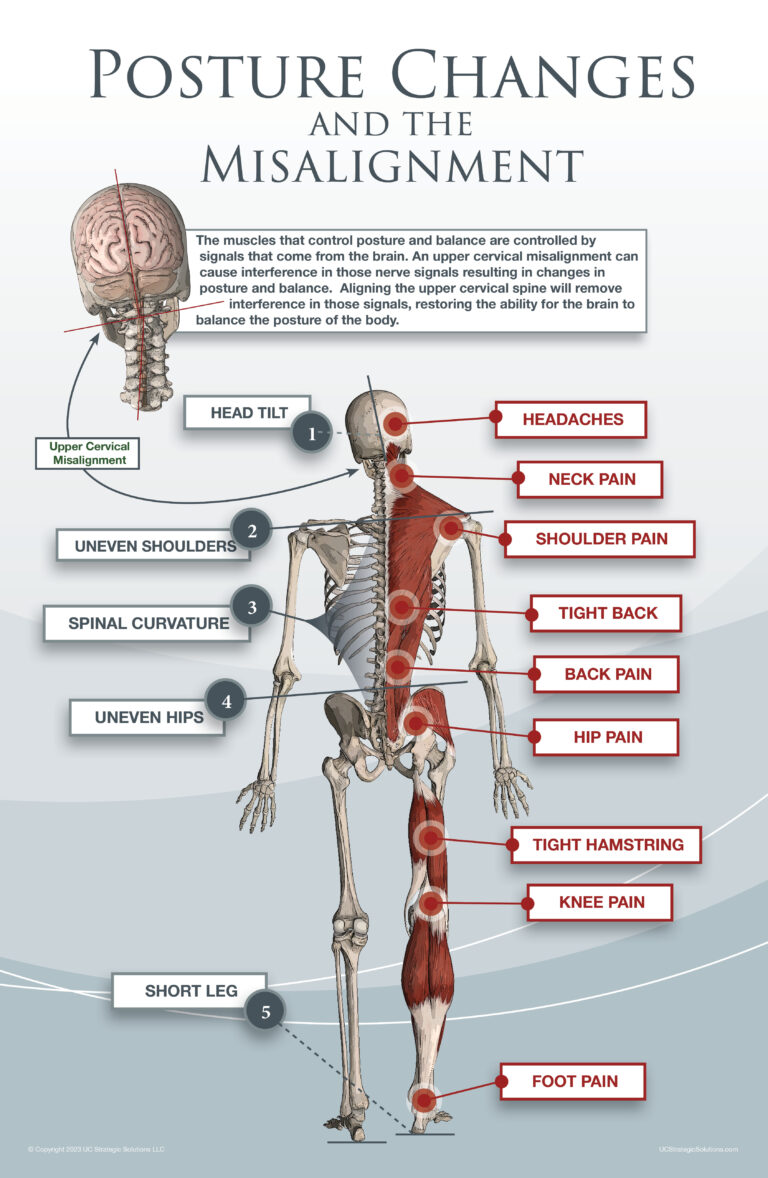Since its inception in 1895, chiropractic has had a tumultuous history. The biggest misconceptions of this wonderful profession start on the inside from the doctors who practice this method of healthcare. This is because, at its core, Chiropractic is a science, art, and philosophy.
Many Chiropractic Physicians can agree on the science, which is that the Chiropractic adjustment directly affects the nervous system.
The philosophy of Chiropractic is rooted in vitalistic principles which is the belief that organic matter (anything that lives) has an innate intelligence within itself that is constantly seeking self-preservation. The body has an internal, subconscious desire to heal itself.
The artistic application of Chiropractic is a hotly debated paradigm. To date, chiropractors use over 150 different techniques. Some clinicians mix and match techniques, while others hold steadfast with one single approach.
Upper Cervical Spinal Care was introduced to the Chiropractic profession in the Spring of 1930. Most Chiropractors have heard of this historically significant time in the annals of Chiropractic history. Interestingly enough, there are 13 different methods of upper cervical spinal care. Some are based more on the structural or orthogonal alignment of the spine, whereas others are more focused on the juxtaposition of motion between the skull and spine.
Dr. B.J. Palmer, the developer of chiropractic, pioneered the profession by implementing the scientific method into chiropractic practice. He developed the foundational principles of the Chiropractic profession. Dr. Palmer, a man of many talents, conducted 15 years of research on the best practices of spine care. Once he established upper cervical care as the most technologically advanced training methodology, he had 100,000 patients annually. Each patient received an extensive medical examination; the only treatment was upper cervical care. Dr. Palmer published over 40 books chronicling the science, art, and philosophy of Upper Cervical Chiropractic.
His research would ignite a new generation of researchers who became enamored with his rudimentary understanding of neurology related to spinal alignment. Before the research of Dr. B.J. Palmer and colleagues, very little was understood about the connection between the brain and spine.
Roger Sperry, Ph.D., won the Nobel Peace Prize when he discovered that the movement of the spine generates 90% of the stimulation and nutrition to the brain. He stated, “The more mechanically distorted a person is, the less energy available for thinking, metabolism, and healing.”
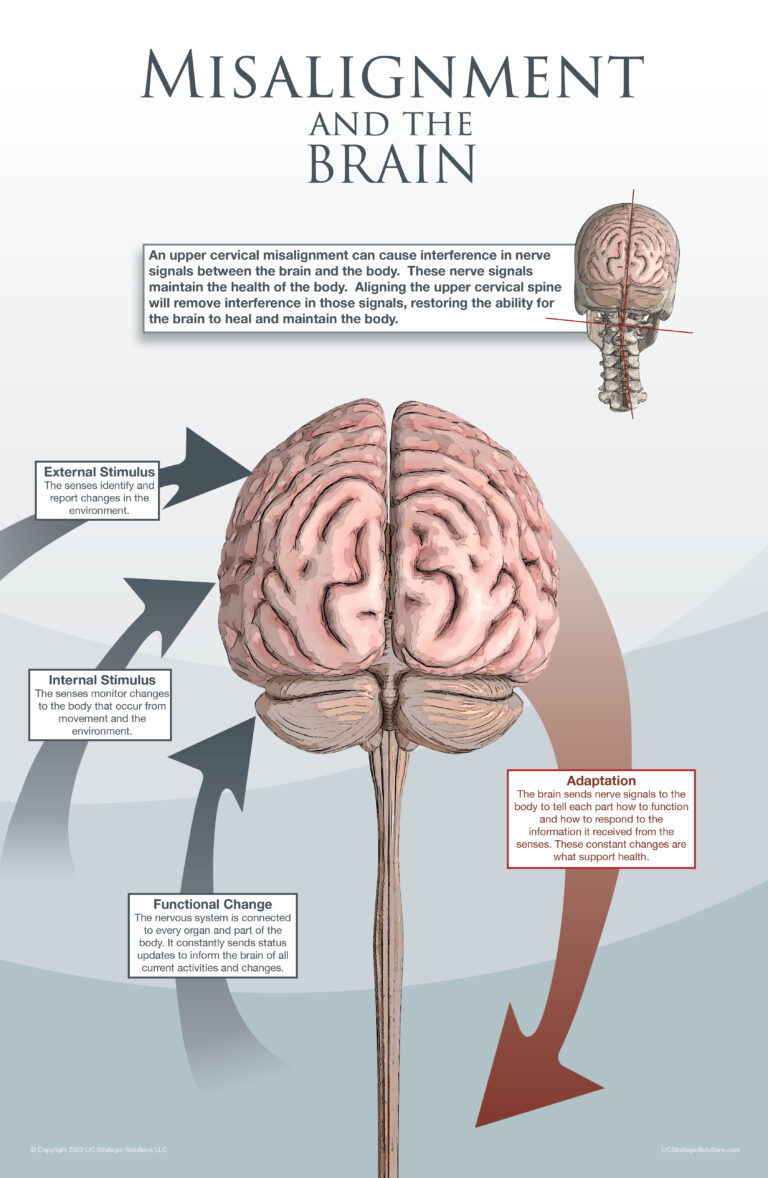
The craniocervical junction (upper cervical spine) is structually unique compared to the rest of the spine. The craniocervical junction has no intervertebral discs nor interlocking facet joints.
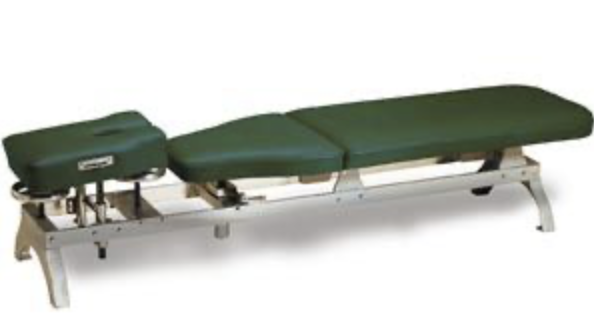
The upper cervical spine is a junction between the brain (occipital bone) and the cervical spinal cord, protected by the atlas vertebra. This bone is very unique in comparison to the rest of the vertebrae. While other vertebrae are square in structure like building blocks, the atlas vertebra is a flat ring.
Between each vertebra, therein lies a disc called an intervertebral disc. These discs are important because they act like shock absorbers. Intervertebral discs also provide space for the nerves that exit the spine.

The nerves that exit the spine do so through the intervertebral foramen which provide plenty of space for said nerves. When nerves get pinched, patients often experience radicular symptoms like numbness, burning, or tingling. If these symptoms go down the leg, its often referred to as sciatica. The nerves at the upper cervical spine provide signals to every cell, tissue, and organ in the body.
In short, the atlas vertebra has a different anatomical structure: no discs or joints. It’s unique in every way. These unique structure characteristics provide an interesting juxtaposition to the underlying nerves that supply electricity to every cell, tissue, and organ of the body.
From the early days of development in utero, the neural streak is one of the very first anatomical structures that forms. The neural streak later becomes known as the brainstem, which is the super highway of nerves that travel between the brain and spine. In fact, every nerve in the body travels through the brainstem making the upper cervical spine the most neurologically dense area in the entire body.
The brainstem sits at the junction between the brain and body which makes the upper cervical spine the crossroads between the brain and spine.

Many Upper Cervical Chiropractors utilize digital infrared paraspinal thermography as an objective measure to determine the neurological integrity of the spine.
This technology was introduced to the Chiropractic profession in 1923. It wasn’t put into use until 1924. Thermography has been utilized for one-hundred years by Upper Cervical Chiropractors. The benefit of this technology is that it gives the clinician an objective, scientific measurement of nervous system function. These nervous system scans are typically performed on every visit.
When the clinician has collected enough scans, over a period of time, there is a pattern that develops. The goal is to monitor infrared scans throughout their treatment plan. The above picture is an example of a pattern that was established with a patient.
Digital infrared paraspinal thermography measures temperature differentials on either side of the spine. The picture below represents an imbalance of temperature on the right and left side of the spine. Temperature is important because its a function of inflammation.
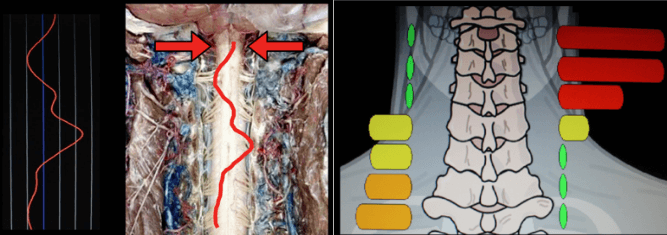
When there is a structural misalignment of the spine, particularly the upper cervical spine, it causes a neurological compromise. This is detected with infrared thermography.
When there is no structural misalignment, like in the picture below, there is a normal infrared spinal scan.
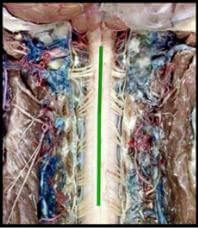
When the atlas vertebra misaligns, often due to trauma, it compromises the nerves underlying the bony structure. This compromise is what Chiropractors refer to as vertebral subluxation. This means a neurological disconnect or compromise exists between the brain and spine. We know this from studies performed by Dr. Palmer nearly one hundred years ago. In the modern era of Upper Cervical Chiropractic, there are assessments and examinations that your doctor can perform to determine if there is either a structural issue, a neurological compromise, or both.
Digital infrared paraspinal thermography is the easiest and most effective way your doctor can determine the problem. The theory of measuring spinal temperature related to spinal structure and neurological function was first introduced in 1924. There have been updates to this technology in the last century.
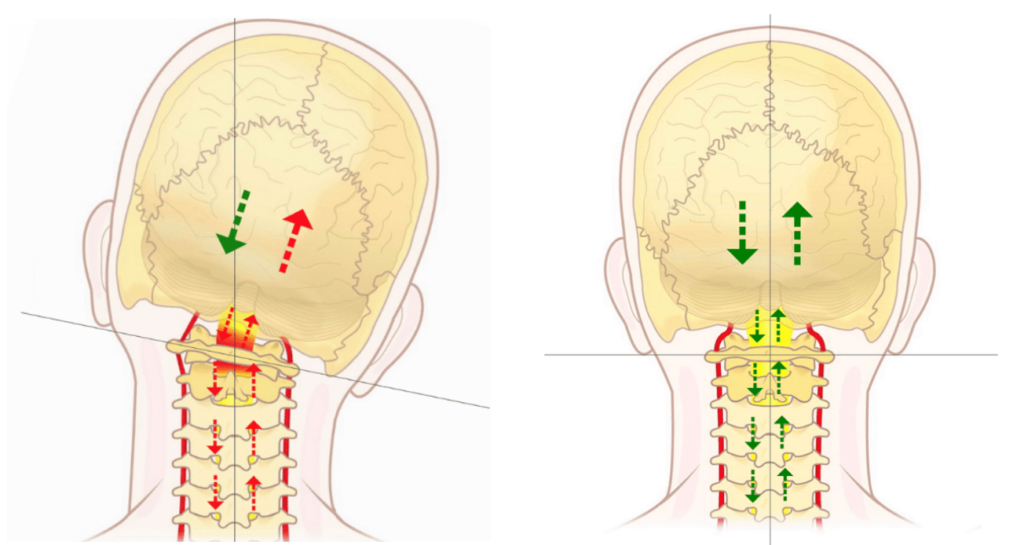
Dr. Michael Lea is a leading expert in digital infrared paraspinal thermography. He has co-authored a textbook on the subject that teaches students and doctors across the globe how to interpret and implement this technology in their practice.
Upper Cervical Spine Care is not about treating symptoms or getting a patient out of pain. It’s about restoring proper motion to the craniocervical junction and reducing or eliminating neurological compromise to the nervous system. When this occurs, a patient functions optimally, allowing the patient’s nervous system to adapt more appropriately to the stress encountered daily.
